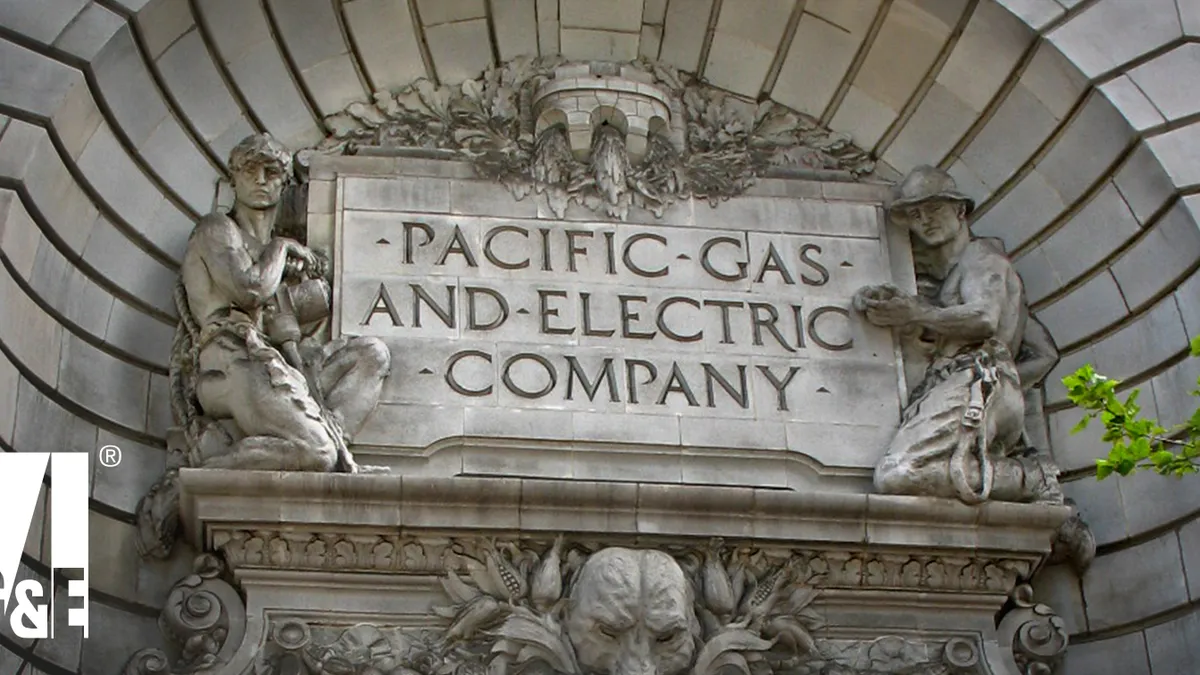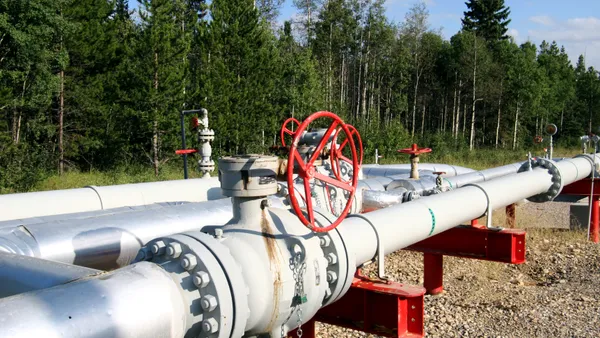Dive Brief:
-
Pacific Gas and Electric (PG&E) and its parent company PG&E Corporation revealed some of the actions they will take to restructure in a bankruptcy court filing Tuesday, including paying all of its court-approved pre-bankruptcy claims through "cash raised from existing equity bond holders" and "equity financed securitized bonds."
-
At the same time, two hedge funds that collectively own 7.8% of PG&E said they plan to raise $15 billion of equity for the utility's reconstruction plan, according to a Securities and Exchange Commission filing on Thursday. Knighthead Capital Management and Abrams Capital Management would raise funds through a rights offering for PG&E's existing shareholders, while contribute $1.5 billion themselves, Bloomberg News reported.
-
PG&E estimated its total wildfire liabilities between 2017 and 2018 were up to $30 billion when it filed for bankruptcy in January. Wildfire claimants will support the utility's restructuring plan if PG&E's "cap on wildfire claims [is] close to their magic number, whatever that is," for pre-bankruptcy liabilities, Debtwire's legal analyst Sarah Foss told Utility Dive.
Dive Insight:
PG&E said in its filing that it would participate in the wildfire fund provided in the newly-enacted legislation, AB 1054. The bill created conditions for PG&E to participate in the fund, giving the utility a June 30, 2020, deadline to have a confirmed plan for reorganization.
The bankruptcy judge is aware of this and will be working on how the parties can get there, according to Foss.
11 months is a short time for these proceedings, she said. While some bankruptcies are presented as "prepackaged cases" that finish up in four to five months, "PG&E is a very unusual bankruptcy case," Foss said.
"You have right now competing plan outlines or competing time proposals from ... at least three groups," she said. The trial and discovery of what those competing plans would be is a "lengthy, complicated time-consuming process," which makes the June deadline very tight.
"The biggest wildcard here is the wildfire claimants and the tort claimants committee," she said. "If a plan gets them onboard, I think you're moving closer to the finish line."
That will involve settling on the cap for wildfire claims and how they are going to be paid. The committee of tort claimants is appointed to represent the interests of persons holding personal injury claims in the case, which includes those who were injured due to wildfires, suffered property or business damages, or lost their loved ones.
Currently, the tort claimants committee wants the Tubbs wildfire case litigated in state court, which would lengthen the bankruptcy process considerably, according to Foss.
The California Department of Forestry and Fire Protection previously concluded that PG&E was not responsible for the ignition of the Tubbs fire, although that is not a legally binding determination.
"I don't think [Judge Dennis Montali] is going to agree with them, I would be very surprised if he granted their request" because "that could throw off the deadline," Foss said.
In its filing, PG&E is counting on the "emergence financing supported by a substantial infusion of cash raised from existing equity holders on market terms or in the capital markets if available on better terms, plus equity financed securitized bonds" to meet its pre-bankruptcy obligations. The shareholder-proposed $15 billion equity infusion would strengthen that effort.
Although specific figures have not been established, PG&E said in its August 6 filing that it would assume "all power purchase agreements and community choice aggregation servicing agreements." PG&E also said rates would remain neutral for its 16 million customers. While that may be encouraging news for ratepayers, Foss reiterated that "at this point, you don't need to get too much in the weeds. We haven't actually seen these term sheets and ... it's too early to tell."
PG&E is also banking on future legislation for assistance, citing Democratic Governor Gavin Newsom's statement when signing AB 1054 in July that it was "not the end of the process." He said he "will be doing more in August," once the state legislature returns in session.
"There was some talk of ... tax-exempt equity bonds that would need legislative approval," Foss said. "As these things go, it's sort of anyone's guess."
PG&E could be allowed to recapitalize the company through the issuance of tax-exempt bonds, provided that it had legislative approval, Bloomberg reported based on criticisms of the company's existing plan.
PG&E's bankruptcy hearing will begin on Tuesday in San Francisco.















